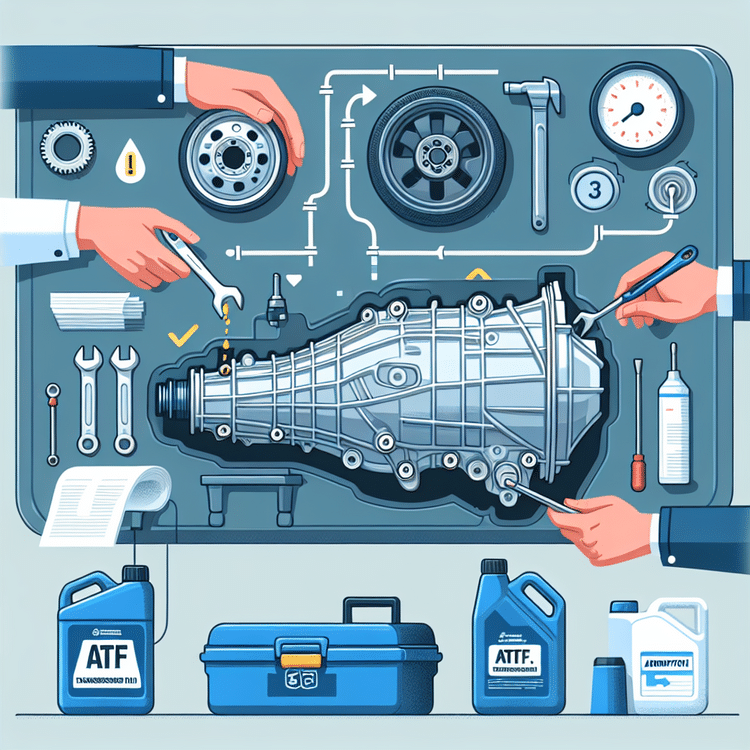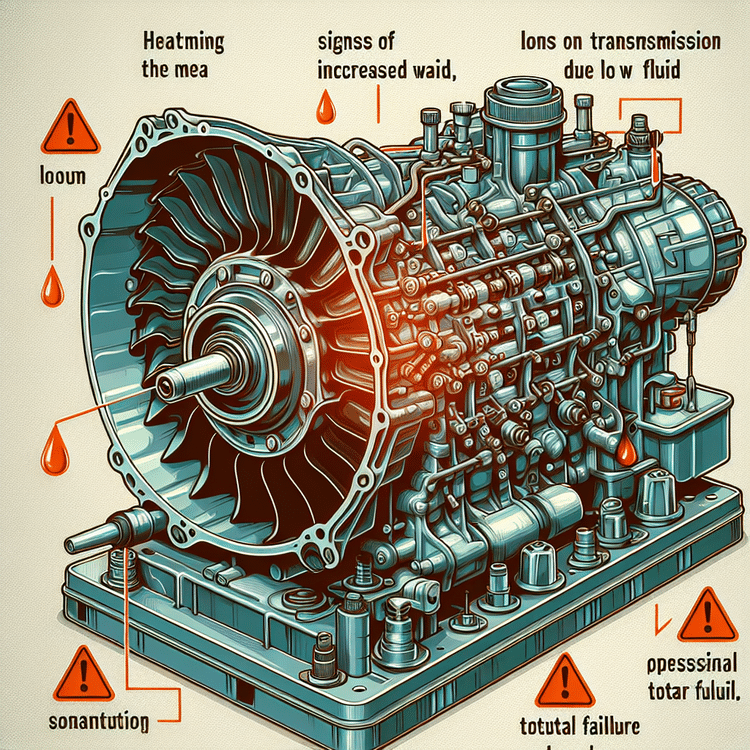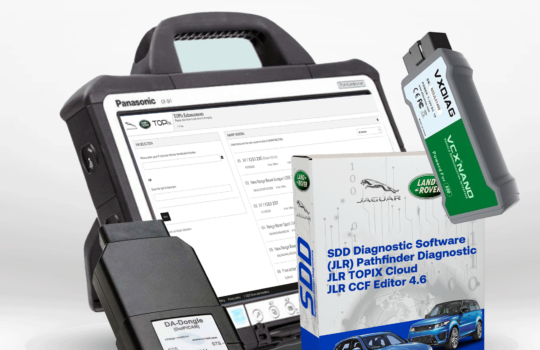Low Automatic Transmission Fluid Symptoms & Solutions
Table of Content
- Introduction: The Importance of Transmission Fluid
- What is Transmission Fluid and Why It Matters
- Common Symptoms of Low Automatic Transmission Fluid
- How to Check Your Transmission Fluid
- How to Add Transmission Fluid
- Common Automatic Transmission Issues Caused by Low Fluid
- Detecting and Addressing Fluid Leaks
- Transmission Maintenance Tips to Prevent Low Fluid Levels
- When to Seek Professional Help
- Conclusion: Maintaining Optimal Transmission Health
Introduction: The Importance of Transmission Fluid

Automatic transmission fluid (ATF) plays a critical role in ensuring the smooth operation and longevity of your vehicle’s transmission. It not only lubricates moving parts but also serves as a hydraulic fluid, enabling gear shifts and maintaining the necessary heat levels within the transmission. Therefore, maintaining adequate fluid levels is essential for optimal performance.
It’s vital for car owners to recognize the automatic transmission fluid low symptoms, which can indicate potential issues. Common signs of low ATF include:
- Delayed or rough shifting between gears
- Strange noises such as grinding or whining when the vehicle is in gear
- Unusual smells, often burning, emanating from the transmission area
- A warning light on your dashboard signaling a transmission issue
If you observe any of these symptoms, it is crucial to check your ATF levels immediately. Regular maintenance, including fluid checks and changes, can help prevent significant transmission problems down the line. For further guidance on troubleshooting, you can refer to our article on Top Tips for Troubleshooting Common Land Rover Issues.
Ignoring low transmission fluid can lead to severe damage, potentially resulting in costly repairs. Stay proactive with your vehicle’s maintenance by being aware of these signs and addressing them promptly.
What is Transmission Fluid and Why It Matters

Automatic transmission fluid (ATF) is a specially formulated fluid used in vehicles with automatic transmissions. It plays a crucial role in the lubrication, cooling, and smooth operation of the transmission system. The fluid helps to ensure that the various components of the transmission are adequately lubricated, preventing wear and tear while facilitating efficient movement of gears.
One of the key functions of ATF is to transmit power from the engine to the transmission, enabling the automatic shifting of gears. Additionally, it aids in heat dissipation, which protects the transmission components from overheating. As such, maintaining the correct level and condition of automatic transmission fluid is vital for the long-term health of your vehicle’s transmission.
When automatic transmission fluid levels are low, you may begin to notice symptoms such as slipping gears, hard shifting, or unusual noises. Regular transmission fluid maintenance, including routine checks and changes, can prevent these issues and prolong the life of your transmission.
Common Symptoms of Low Automatic Transmission Fluid

Low automatic transmission fluid can lead to various operational issues and symptoms that car owners need to be vigilant about. Some of the most common transmission fluid warning signs include:
- Slipping Gears: If you notice your vehicle unexpectedly slipping out of gear or struggling to stay in gear, this may indicate a low fluid level.
- Delayed Engagement: A noticeable delay when shifting from park to drive or reverse can signal that your transmission is not getting the necessary lubrication.
- Unusual Noises: Grinding, whining, or clunking noises when shifting gears often point to a lack of adequate fluid.
- Overheating: Low fluid levels can cause your transmission to overheat, potentially leading to severe damage. Signs of overheating may include burnt odors or a warning light on the dashboard.
- Dashboard Warning Signs: Many vehicles are equipped with transmission fluid level sensors that will illuminate a warning light if the fluid is low.
If you experience any of these symptoms, it is crucial to check your transmission fluid levels and monitor fluid levels as part of regular maintenance.
For further insights on diagnosing transmission issues, consider reading our detailed guide on gearbox fault solutions for Range Rover.
How to Check Your Transmission Fluid

Checking your transmission fluid regularly is essential for maintaining a healthy transmission system. Here’s a step-by-step guide on how to perform a transmission fluid check:
- Park Your Vehicle: Ensure your vehicle is parked on a flat surface, and engage the parking brake for safety.
- Locate the Dipstick: Open the hood and locate the transmission fluid dipstick. It is usually situated near the back of the engine bay and may have a yellow or red handle.
- Remove the Dipstick: Pull out the dipstick and wipe it clean with a lint-free cloth. This gets rid of any residues and provides a clear reading.
- Check Fluid Level: Reinsert the dipstick fully, then remove it again to check the fluid level. The fluid should be between the “full” and “add” marks on the dipstick.
- Assess Fluid Color: Examine the color of the fluid. Healthy transmission fluid typically appears bright red. If it’s dark brown or has a burnt smell, it may be time for a replacement.
For more detailed information on keeping your vehicle’s major components such as sensors in check, you can refer to our guide on Camshaft Position Sensor Replacement and for further diagnostics, check out our Definitive Gearbox Fault Solutions for Range Rover.
How to Add Transmission Fluid

Adding transmission fluid is a crucial maintenance task that ensures your vehicle’s automatic transmission operates smoothly. Here’s how to safely add transmission fluid:
- Gather Necessary Tools and Supplies:
- Transmission fluid (ensure it is the correct type for your vehicle)
- A funnel (for easier pouring)
- A clean rag or towel
- Gloves (to keep your hands clean)
- Locate the Dipstick: Open the hood of your vehicle and find the transmission dipstick. This part is usually labeled. If you’re unsure, consult your vehicle’s owner’s manual.
- Check Fluid Level: Remove the dipstick, wipe it clean, then insert it back into the tube. Pull it out again to check the fluid level. The fluid should be at the full mark.
- Add Fluid: If the fluid is low, use the funnel to add the appropriate type of transmission fluid slowly, checking the level frequently to avoid overfilling.
- Replace the Dipstick: After adding fluid, securely put the dipstick back in place. Start the engine and let it run for a few minutes, then check the fluid level once more to ensure it’s at the proper level.
- Clean Up: Dispose of any used rags and ensure that no spills occurred during the process.
For more information on vehicle maintenance, check out DD15 Coolant System: Diagram, Issues, and Maintenance Tips, or learn Replacing Your Vehicle Speed Sensor: A Step-by-Step Guide.
Common Automatic Transmission Issues Caused by Low Fluid

When automatic transmission fluid levels are low, several issues can arise that may compromise the performance and longevity of your vehicle’s transmission. One of the most pressing problems is transmission overheating. Insufficient fluid means less lubrication and cooling, placing added stress on the transmission components.
Another significant issue related to low transmission fluid is increased wear and tear. The fluid serves as both a lubricant and a hydraulic fluid, and when it falls below recommended levels, it can lead to accelerated wear on vital parts. This could ultimately result in the need for expensive repairs or a complete transmission replacement.
- Transmission overheating, which can occur during stop-and-go traffic or extended periods of high load.
- Slipping gears or delayed engagement when shifting.
- Unusual noises, such as whining or grinding, indicating potential damage.
To avoid these automatic transmission issues, it is essential to regularly check transmission fluid levels and replace the fluid as needed. For more insights on preventing transmission damage, consider reviewing our guide on AHI Module Issues: Understanding DTC P24F700.
Detecting and Addressing Fluid Leaks

Identifying transmission fluid leaks is crucial for maintaining your vehicle’s performance. Common leak points include the transmission pan, cooler lines, and seals. If you notice any reddish-brown fluid puddles beneath your vehicle, this could indicate a transmission fluid leak.
Signs of a Transmission Fluid Leak:
- Fluctuating gear shifts or difficulty shifting gears.
- Unusual noises, such as grinding or whining, during operation.
- A burning smell, which can indicate overheating due to low fluid levels.
When you suspect a leak, immediate action is essential. First, check your fluid levels using the dipstick (if available). If levels are low, add the appropriate transmission fluid. Then, examine for visible leaks around the aforementioned areas. Use a flashlight if necessary to spot small leaks more easily.
If the leak persists after topping off the fluid, it is advisable to consult a professional mechanic to perform a more thorough inspection and repair. Regular maintenance can prevent issues in the future, and for tips on routine checks, consider reading our article on Top Tips for Troubleshooting Common Land Rover Issues.
Transmission Maintenance Tips to Prevent Low Fluid Levels

Maintaining your vehicle’s transmission is crucial for ensuring its longevity and performance. Regular maintenance practices can help prevent low fluid levels and subsequent transmission damage. Here are some essential transmission maintenance tips:
- Regular Fluid Checks: Periodically check your transmission fluid level. Low fluid levels can lead to overheating and transmission failure. Make it a routine to inspect the fluid every month.
- Scheduled Fluid Changes: Adhere to the manufacturer’s recommendations for changing the transmission fluid. This typically occurs every 30,000 to 60,000 miles, depending on your vehicle.
- Use Quality Fluid: When replacing or adding fluid, always use the recommended type from your vehicle manufacturer. Low-quality fluids can lead to accelerated wear.
- Inspect for Leaks: Regularly check for signs of leaks beneath your vehicle. If you notice any fluid spots, get your vehicle inspected immediately.
Moreover, integrating these strategies can significantly reduce the risk of preventing transmission damage by ensuring that your transmission remains in optimal condition.
When to Seek Professional Help
It is crucial to recognize signs of transmission problems to ensure the longevity and effectiveness of your vehicle’s transmission system. If you encounter persistent symptoms, such as slipping gears, unusual noises, or warning lights on your dashboard, it may be time to consult a mechanic.
Here are some indicators that require professional diagnostics:
- Persistent Warning Lights: If your vehicle’s transmission light is illuminated for an extended period, it indicates a serious issue that should not be ignored.
- Fluid Leaks: Any visible fluid leaks under your vehicle, especially if they are red, can point to low transmission fluid levels or a failing transmission seal.
- Unusual Sounds: Grinding, clunking, or buzzing noises while shifting can signify internal transmission damage.
- Delayed Engagement: If there is a noticeable delay when shifting from park to drive or reverse, it is a sign of potential transmission failure.
Conclusion: Maintaining Optimal Transmission Health

In maintaining your vehicle, understanding the automatic transmission fluid low symptoms is crucial. Signs such as slipping gears, unusual noises, and delayed shifting can indicate that your transmission fluid is not at the optimal level. Regular checks and maintenance of the transmission fluid will help prolong your vehicle’s lifespan and ensure smoother performance.
It’s essential for car owners and mechanics alike to take proactive measures. A simple inspection of your transmission fluid levels can save you from costly repairs down the road. Ensure that you follow a routine maintenance schedule and consult professional services for any abnormalities you observe.
For more detailed guidance on maintenance, consider reading our post on Essential Land Rover Maintenance Tips. Additionally, if you’re looking to enhance your diagnostic capabilities, explore the Toyota TechStream User Manual, which provides comprehensive tools for your vehicle’s care.





